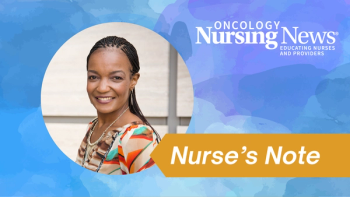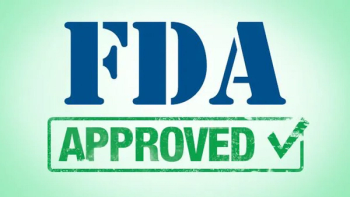
- February 2014
- Volume 8
- Issue 1
Tools to Measure Patients' Quality of Life and Identify Resources to Help
Among the podium sessions featured at the ONS Connections conference was a panel focused on how technologies are being deployed to improve patient care.
Susan Tavernier, PhD, APRN-CNS, AOCN
Among the podium sessions featured at the ONS Connections conference was a panel focused on how technologies are being deployed to improve patient care.
One such tool is the ePGI, a digitized version of the Patient Generated Index, an established quality-of-life (QOL) assessment. Susan Tavernier, PhD, APRN-CNS, AOCN, assistant professor, Idaho State University College of Nursing, and her study team developed the ePGI and conducted a small pilot to evaluate its usability and acceptability in an outpatient radiation oncology setting.
An important aspect of the project was use of both adaptive design, said Tavernier, meaning that an application be developed so that it can work on multiple devices—PCs, laptops, smartphone, or tablet—and agile design, whereby the focus is on the end user with whom the product is tested and improvements made based on user experience feedback.
Tavernier reported that in the small pilot study of the ePGI iPad version, all users (n = 15) indicated that the ePGI was “easy” or “very easy” to use and navigate. Fifty percent reported that they did not share this type of information with their physician or nurse, and most (64%) believed the information on the ePGI would be useful for decisions. Clinicians, based on interviews with four physicians and four nurses, said that the ePGI was a useful tool to initiate dialogue about QOL issues, reveal infrequent or unusual side effects of treatment, and assist with symptom management. Nurses felt that the tool would be more useful than did physicians. Tavernier added that physicians, especially, and some nurses were perplexed by patients’ having QOL scores lower than they had anticipated.
Among the ePGI’s benefits are removal of the need for computation by patients, said Tavernier, as well as a color-coding scheme, which enables clinicians to easily identify priority QOL issues on a summary page.
Tavernier hopes to see larger studies evaluating the tool, concluding that this pilot suggests that the ePGI is feasible for use at the point of care and may help to restructure patient— provider communication.
Another session featured at the ONS Connections conference discussed an application for a device that's already used in everyday life.
The idea for a smartphone application for nurses to help patients identify breast cancer resources emerged when Deborah Walker, DNP, CRNP, AOCN, learned through a community needs assessment project that patients, their families, and friends living in north central Alabama were not consulting their nurses or other providers for information on community cancer resources.
Walker, an assistant professor at the University of Alabama School of Nursing in Birmingham, sought to change that, and she spearheaded a 2-year project to identify resources for inclusion in a mobile and Web-based software application for residents of five Alabama counties. She designed the tool to align with a patient’s needs as determined through the National Comprehensive Cancer Network (NCCN) Distress Screening Tool. Walker used focus groups and surveys to identify gaps, promote ease of use, and obtain general feedback.
The app is organized so that practitioners can search by type of service, eg, counseling, financial assistance, hospice services, and it also includes resources for targeted populations. Maps and directions to the service locations are also provided through the app. Nurses are encouraged to follow up with patients to see if they accessed the recommended resources, and the customized list can be printed out and kept with the patient’s chart, Walker added.
The resources are updated quarterly, and Walker also hopes to include a system whereby patients can rate the resource. The app is especially timely given the American College of Surgeons (ACoS) Commission on Cancer new standard that cancer centers have a process in place by 2015 to screen for psychosocial distress. “As oncology clinical practices move toward the ACoS recommendation of measuring distress in their cancer patients, a list of resources will be needed to make appropriate referrals,” noted Walker.
“This mobile and convenient method of resource identification can be adapted for any environment and be a real timesaver for the nurse,” she continued. The code she and her partners wrote for the app is generalizable. “For me, it’s about getting it out there and making it useful.” Walker has received a grant to continue the work and evaluate the app’s effectiveness. The Cancer Resource App can be downloaded for iPhone and Android smartphones and also be used as a Web-based program if providers prefer. For more information, visit
Articles in this issue
almost 12 years ago
Select Older Patients Can Avoid Radiation After Breast-Conserving Surgeryalmost 12 years ago
Latest Data Further Support Ibrutinib's Efficacy in CLLalmost 12 years ago
Longer Bortezomib Duration Linked to Improved Survival in Multiple Myelomaalmost 12 years ago
Treatment With Vaptans Can Help Alleviate Hyponatremia in Cancer Patientsalmost 12 years ago
Helping Patients Overcome Fear of Genetic Testing to Uncover Cancer Risksalmost 12 years ago
Behind the Numbers: HPV Vaccination Is Highly Effectivealmost 12 years ago
Strategies to Help Patients Adhere to Oral Cancer MedicationsNewsletter
Knowledge is power. Don’t miss the most recent breakthroughs in cancer care.



















































































